Building a Republic: inside one superfan's shrine to ROG
One of the awesome things about being a PC enthusiast is the ability to customize your computer to really make it your own. You don’t have to be an artist to create something eye catching and unique; plenty of gorgeous PCs are nothing more than careful color matching and creative cable management. More advanced builds with bespoke finishes and customized cases require real skill, not to mention an eye for design and a lot of time. For most people, a custom build is enough of a project. However, some have grander dreams. Vinh Loc wanted more than just a nice looking system with a cool color scheme—he wanted the room to match.
Mister Loc

Vinh Loc is a 27-year-old recruiter from Vietnam and a diehard Republic of Gamers fan. His introduction to ROG in 2008 left a lasting impression. The look, style, and branding all connected with Loc, and he knew then that he wanted two things: an ROG PC and a matching themed room to put it in. He had seen a lot of ROG case mods, but he wanted to take things a step further and build his own Republic. Although Loc wasn’t ready to start right away, that didn’t stop him from brainstorming ideas for the project. He joined the ROG community and drew inspiration from ROG logos, wallpapers, and slogans.
 The ROG EN9800GT Matrix sparked Loc's obsession with ROG.
The ROG EN9800GT Matrix sparked Loc's obsession with ROG. How Loc envisioned the front of the room would look.
How Loc envisioned the front of the room would look. Another early concept shows how Loc's idea for the room evolved.
Another early concept shows how Loc's idea for the room evolved. Loc's custom light fixture as it was originally designed.
Loc's custom light fixture as it was originally designed.
Loc's dreams finally became a reality in 2016. Work began on the construction of his custom ROG gaming room in April and took four months to complete. It includes custom light fixtures as well as drapery and furniture that match the ROG color palette. The electrical wiring for the central overhead light presented the biggest challenge of the entire project, according to Loc. The custom fixture features the ROG eye logo in a glowing red and white, with a base that lights up independent of the logo and uses RGB LEDs to cycle through different colors. Outside of the design and production of the fixture itself, the complexity of the electrics inside the room made it hard for Loc to install the LED bulbs.
 The ceiling fixture was the most complicated aspect of the entire project.
The ceiling fixture was the most complicated aspect of the entire project. The base features RGB lighting that glows independently of the ROG logo.
The base features RGB lighting that glows independently of the ROG logo. The end result looks even better at night.
The end result looks even better at night.
With lighting taken care of, he turned his attention to the walls, drawing inspiration from the various ROG wallpapers and logos he had seen over the years. His personal favorite takes prime placement on the front wall. Mounted over Loc’s floating desk are the words ‘I rule my game,’ with a red and white ROG masquerade mask just above it. The slogan and ROG mask both light up with the flick of a switch, casting a red and white glow across the wall.
Parked in front of Loc’s two battlestations are DXRacer chairs in red and black to match the ROG theme. A light gray couch sits along one wall for spectators or kicking back between games, while gold curtains and black ROG-themed throw pillows tie the whole room together.
 Loc stands next to his favorite ROG slogan.
Loc stands next to his favorite ROG slogan. The two DXRacer chairs are red and black to fit the theme of the room.
The two DXRacer chairs are red and black to fit the theme of the room. ROG pillows and gold curtains complete Loc's dream game room.
ROG pillows and gold curtains complete Loc's dream game room.
Building an obsession
Loc found his passion for PCs and gaming at just 13. His first computer was a complete system purchased from a local shop; it was based on a Celeron CPU paired with integrated graphics and just 128MB of RAM. In the era of GeForce 3 and 4 video cards, the system wasn't much, but it was more than enough to play some Starcraft and ignite the spark of curiosity. Loc started reading voraciously about PCs and components, learning from friends, and even went so far as to take his own machine apart.
His hands-on approach to learning soon ended in disaster: after one session of removing and installing components from his PC, Loc put everything back together to find that the system no longer worked. It wasn't until three years later, in 2005, that Loc was ready to build his first PC. Based on a Pentium 4 processor and 512MB RAM, the rig featured an ASUS GeForce 6200 graphics card, but it would be a while before Loc got his first glimpse of the Republic of Gamers.
In 2008, ASUS released the ROG EN9800GT Matrix, and Loc encountered the ROG family for the first time. In researching the card, he came across a plethora of other ROG components and peripherals with the same distinctive look and style. That was the moment that everything changed for Loc. As a poor student, he couldn't afford to buy the EN9800GT, but the card's launch planted the seed for what would eventually become his dream gaming room.
Loc's next custom PC came in 2011 and consisted of even more ASUS products. He upgraded his Pentium 4 processor, exchanging it for a Core i7-3770K, and paired his new CPU with an ASUS Z77 Sabertooth motherboard. He also purchased an ASUS GeForce 680 DirectCU II graphics card. The build was a huge step up from his last computer. He finished it off with an ASUS MX239H monitor that would eventually be traded in for a gaming-oriented MG278Q display with a smooth, 144Hz high-refresh panel.
 Loc poses with the components for a new build.
Loc poses with the components for a new build.
Taking the plunge
In 2015, Loc got his hands on his first ROG product, swapping out his old GTX 680 for an ROG Matrix GTX 980 Ti. The upgrade gave him a huge boost in performance and greatly reduced heat output and noise, but it also taught him about the challenges he would face in obtaining more ROG gear. Because of limited availability in Vietnam, Loc has to purchase his ROG products internationally at a premium. That means longer shipping times and less money to spend on other upgrades to his machine.
Despite the difficulties in acquiring components, Loc was hooked. His collection of ROG hardware quickly expanded far beyond a single video card. He bought a Rampage V Extreme motherboard only to upgrade to the Rampage V Edition 10 a year later, swapping out his Core i7-5820K CPU for a Core i7-6850K along the way.
With a Core i7 now available as a spare, Loc started thinking about a second build that could be used by his brother and sister, or a friend when they came over to play. He purchased an ASUS X99-A motherboard, a GeForce GTX 1060 graphics card, and 16GB of RAM to complete his second battlestation. He also upgraded his own computer with a GTX 1080 and purchased two G-Sync monitors, the ROG Swift PG279Q and PG278Q, to eliminate stutter and lag with a combination of high refresh rates and G-Sync technology.
 Last year, Loc upgraded his main PC and started work on a second build.
Last year, Loc upgraded his main PC and started work on a second build. The PG279Q and PG278Q on display.
The PG279Q and PG278Q on display.
In the past year, both machines have received substantial upgrades. Loc's second PC got the full ROG treatment with the addition of a Maximum IX Hero motherboard, and he subbed in a Core i7-7700K as well. The CPU switch cost him some cores, but it was worth it for Kaby Lake's improved IPC and higher clock speeds. With the Maximus IX Hero, he gained a second M.2 slot, RGB lighting with Aura Sync control, and support for USB 3.1 Gen2 devices.
Of all the upgrades he's done, Loc says this year's decision to equip each machine with a GeForce GTX 1080 Ti graphics card and ultra-wide ROG Swift PG348Q monitor was one of the best he's ever made. His old setups just don't compare to the larger screens, higher resolution, and greater GPU power behind his latest configs.
Have ROG, will travel
For avid gamers, traveling means time away from a favorite hobby, but Loc doesn't leave his love of ROG behind when he hits the road. This superfan owns two ROG laptops including the super slim Zephyrus GX501. The Zephyrus packs an Intel Core i7-7700HQ and GeForce GTX 1080 GPU into an ultrabook chassis with a 120Hz IPS-type panel and Aura RGB lighting. Its unique hinge, which expands to open a 6-mm gap for better airflow, keeps the laptop slim enough for Loc to carry on all of his travels without sacrificing the powerful hardware needed to run all of his favorite games.
His other laptop is the ROG GX800VH complete with detachable water-cooling module. This beast boasts factory-overclocked GeForce GTX 1080 SLI GPUs that power a 4K IPS-type display with the same buttery smooth G-Sync tech as the Zephryus and his desktop monitors. Travelling with the GX800VH is possible (it even comes with its own suitcase), but to witness the full power of this laptop, you must connect it to the water-cooling unit. Since performance peaks with this desktop-like configuration, Loc has it perched on his coffee table, so he can use it as a third gaming PC from the comfort of his couch. He uses the GX800VH's travel suitcase as regular luggage, so he can fly the flag for ROG wherever he goes.
 The ROG Zephyrus measures under 18 mm thick when it's closed.
The ROG Zephyrus measures under 18 mm thick when it's closed. The Zephyrus allows Loc to get his gaming fix when he's away from home.
The Zephyrus allows Loc to get his gaming fix when he's away from home. The GX800VH with water-cooling module attached.
The GX800VH with water-cooling module attached.
What's next
Vinh Loc was coy when asked about future plans for the ROG room and his PCs, revealing only that big changes are coming in 2018. With Coffee Lake around the corner and other new chips on the horizon, there’s plenty to keep enthusiasts like Loc excited. We’re glad we got to see the room in its current form and will be following along on Instagram and YouTube for what comes next.
Author
Popular Posts

How to adjust your laptop's P-Cores and E-Cores for better performance and battery life
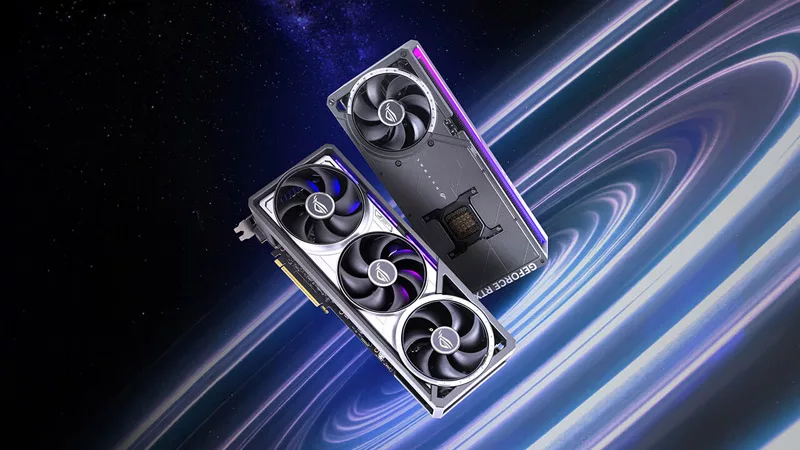
Introducing the ROG Astral GeForce RTX 5090 and 5080: a new frontier of gaming graphics

How to Cleanly Uninstall and Reinstall Armoury Crate
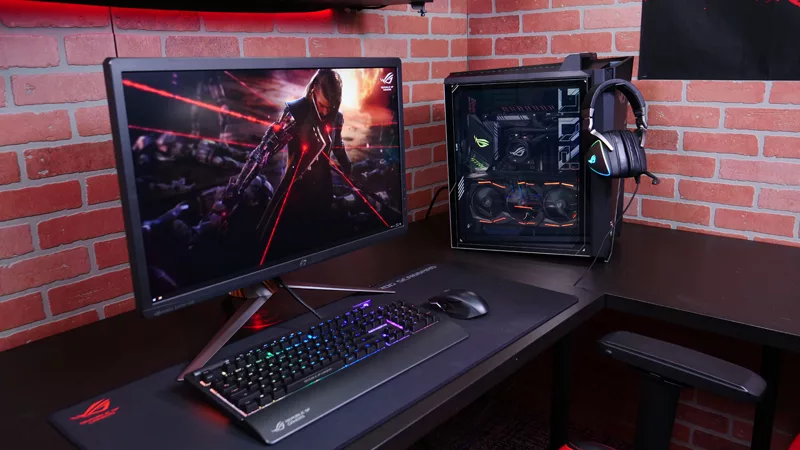
How to configure your PC's RGB lighting with Aura Sync
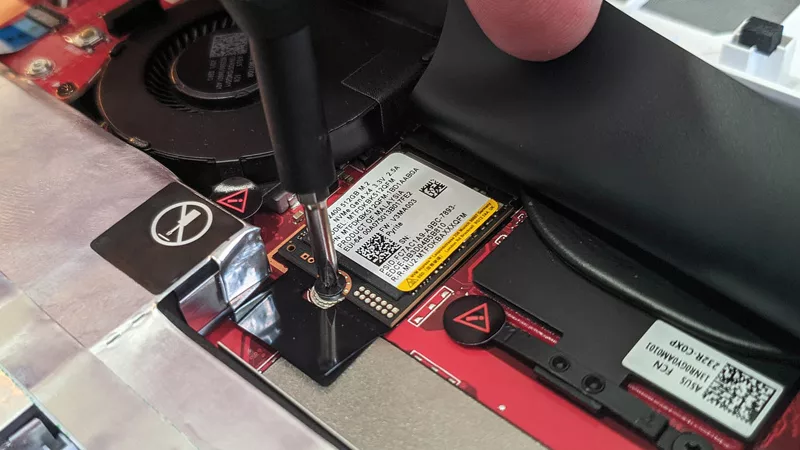
How to upgrade the SSD and reinstall Windows on your ROG Ally or Ally X
LATEST ARTICLES

Behind the scenes with PC modder Derek Wilson, builder of our epic new OMNI PC
Bringing OMNI to life as a 4-foot tall gaming PC was no small task—but Derek was up to the challenge.
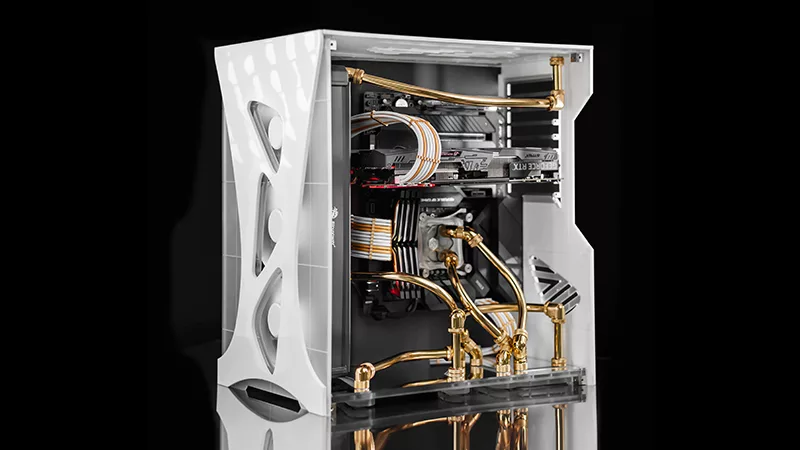
An inside look at Ben Q’s brass-filled Blanco build
Ben Q's brass-filled Blanco build fuses a custom case and cooling hardware with ROG components for a one-of-a-kind PC.
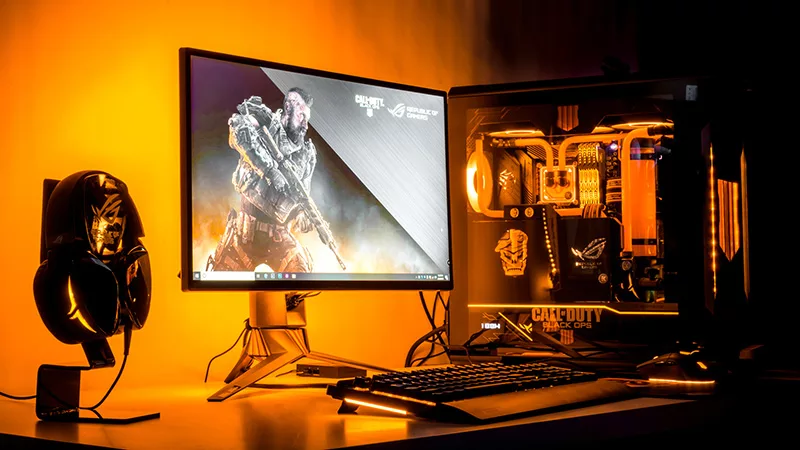
Behind The Bunker: A Look At Snef's Combat-ready Black Ops 4 Build
Take a tour of a battle-ready PC created by renowned modder Snef and inspired by Call of Duty: Black Ops 4.

Around the world in 100 quadrillion clock cycles
The ROG Strix GL502VS has spent the last year looking for the best gaming experiences in the world and has seen everything from VR in Prague to parkour in Bulgaria.
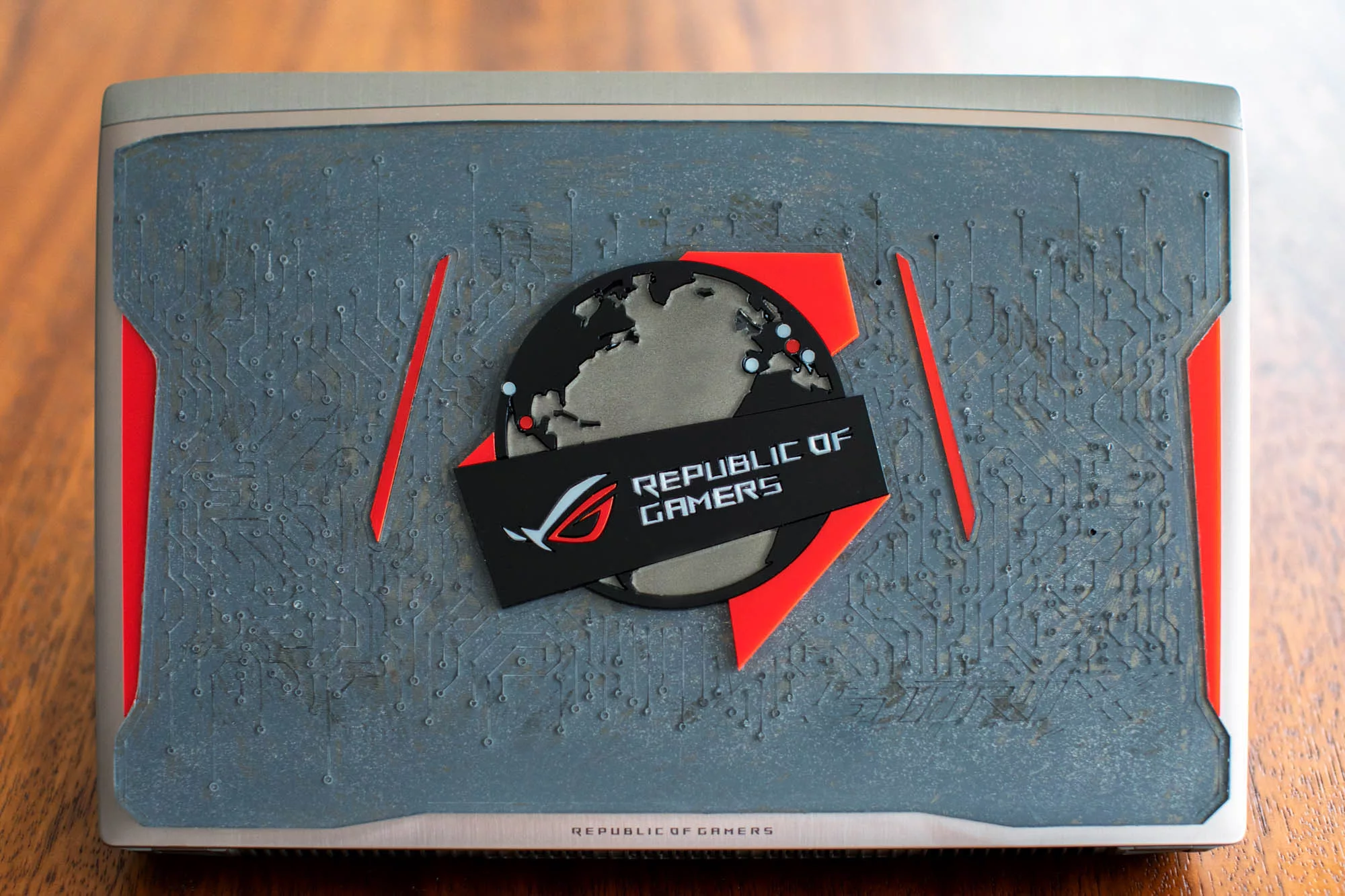
Celebrating the globetrotting ROG Strix GL502VS with Mexico’s makerspace movement
We take an inside look at Mexico's quickly growing makerspace movement, including 3D printing ROG case mods and designing our very own custom GL502VS cover.
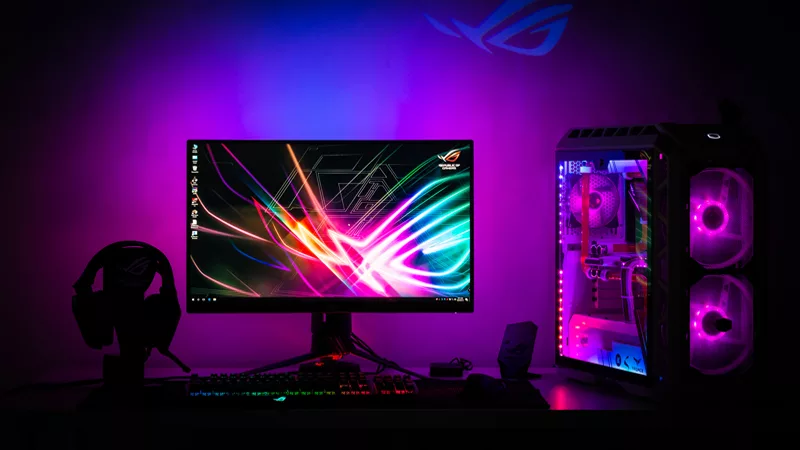
All Aura Sync everything: Inside Snef's Aurora Borealis-inspired build
How far can you take an obsession with RGB? Snef goes full Aurora Borelis with Aura Sync.

